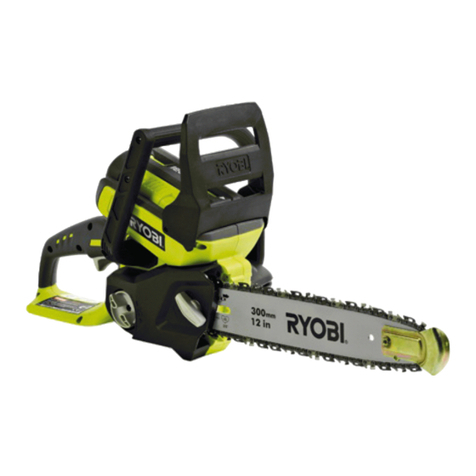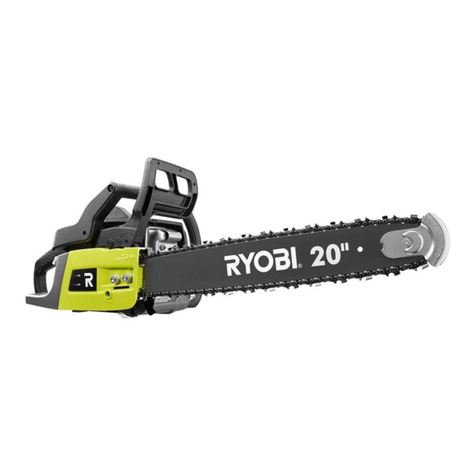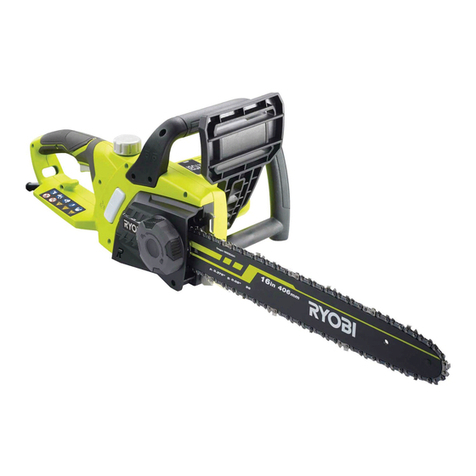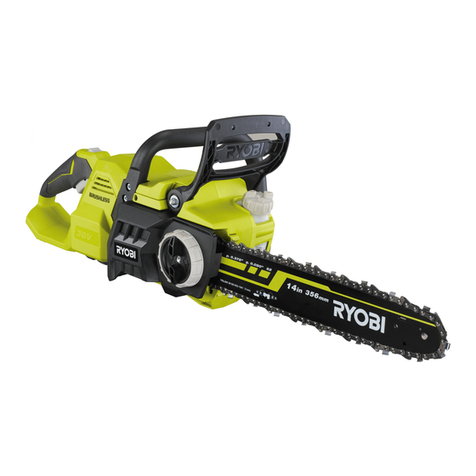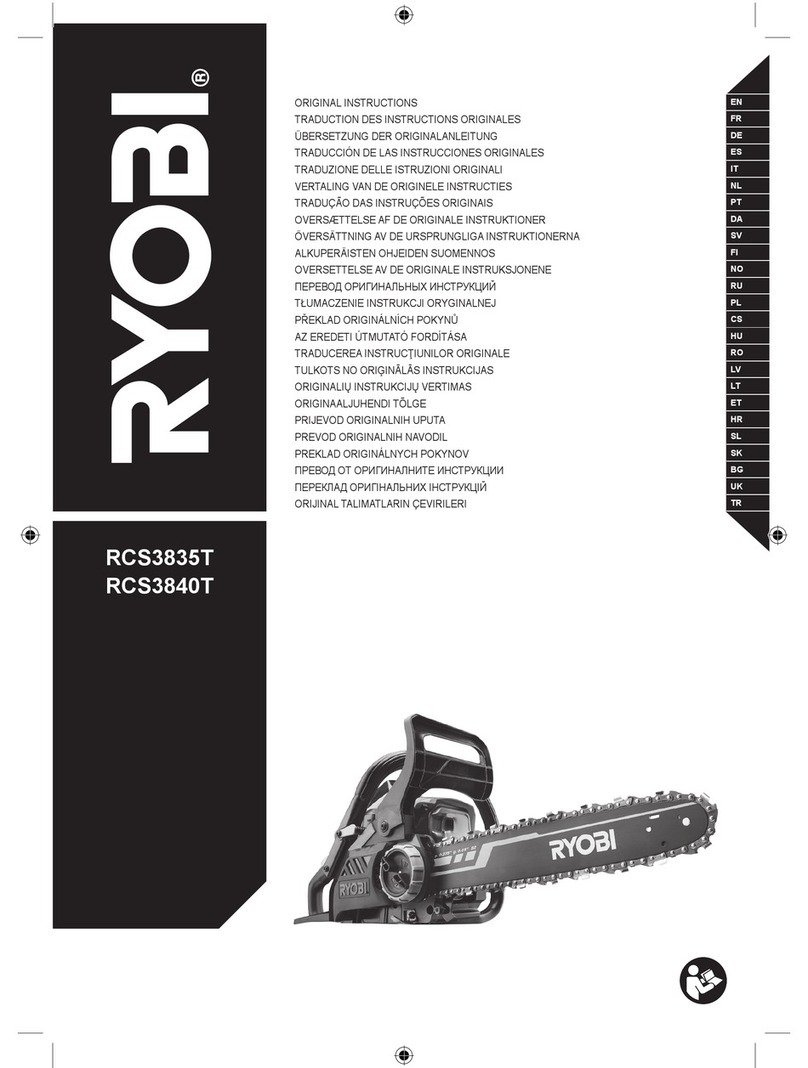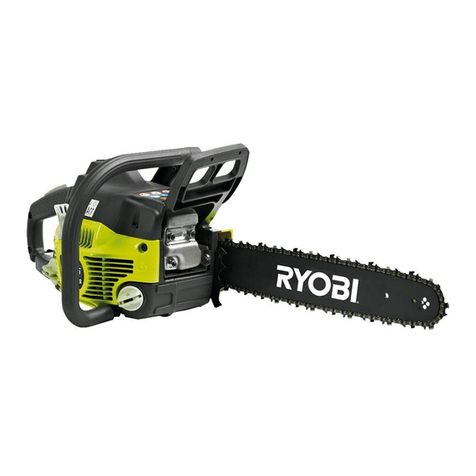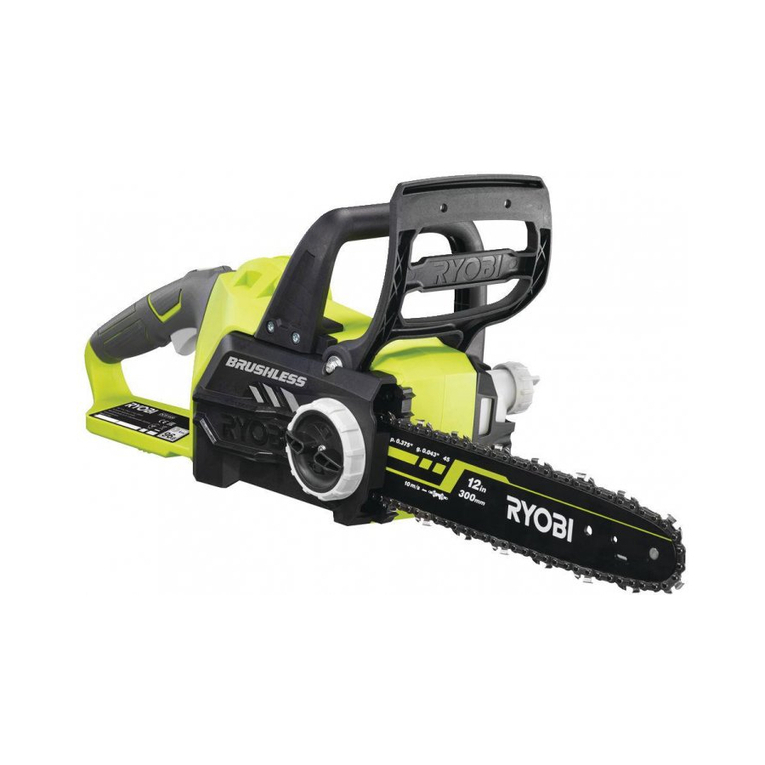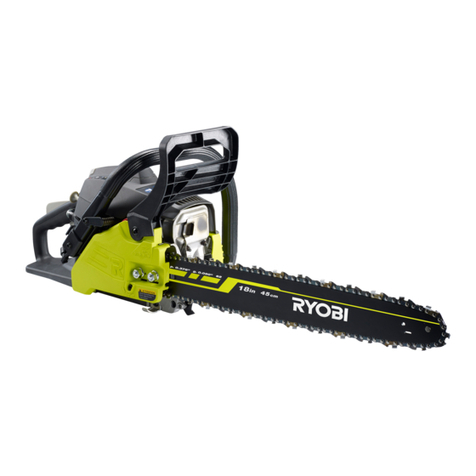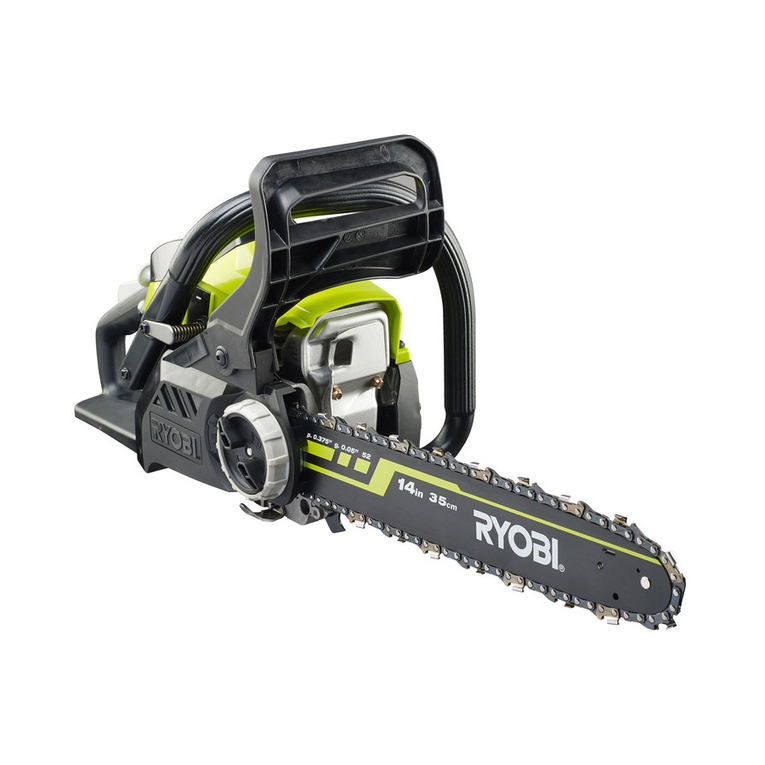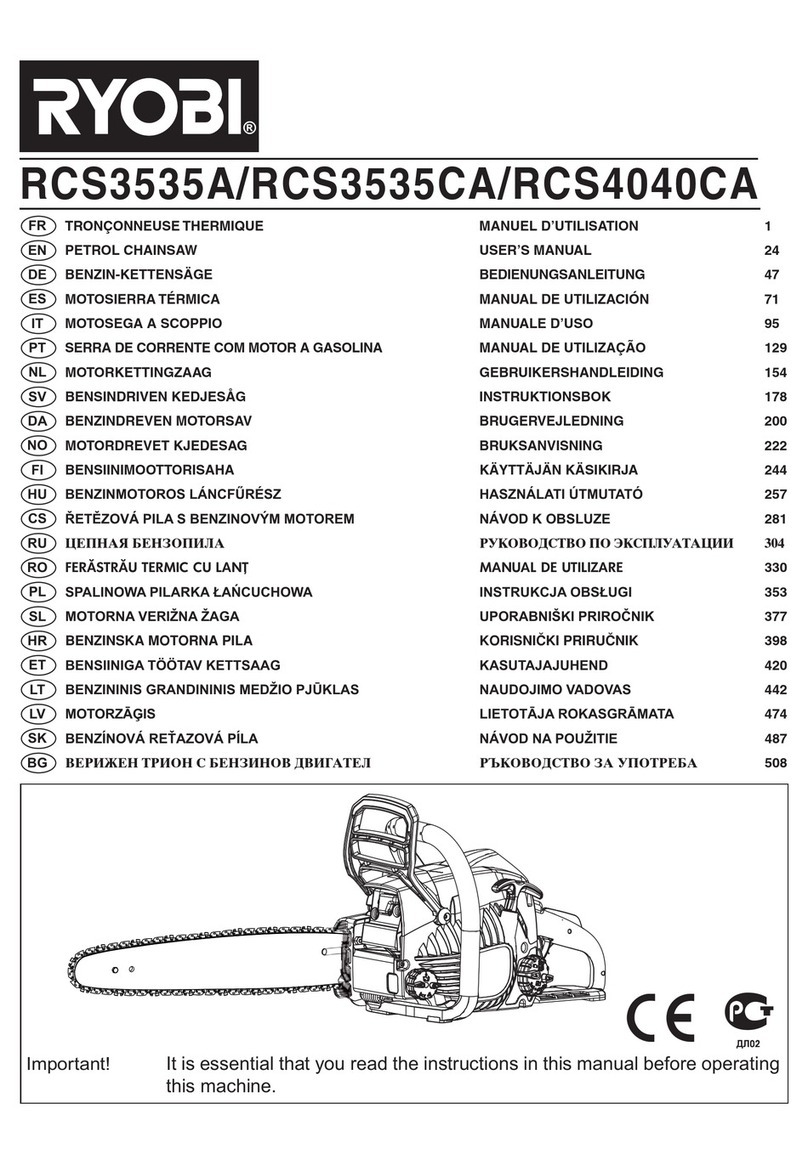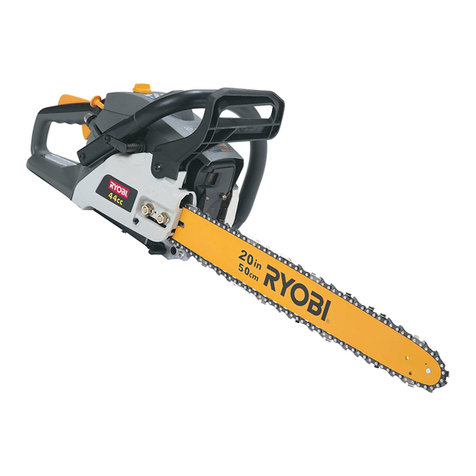
6 - English
CHAINSAW SAFETY WARNINGS
non-slip heavy duty gloves to improve your
grip and to protect your hands. Do not wear
jewelry, short pants, sandals, or go barefoot.
Do not wear loose fitting clothing, which could
be drawn into the motor or catch the chain or
underbrush. Secure hair so it is above shoulder
level. Wear hearing and head protection.
Heavy protective clothing may increase operator
fatigue, which could lead to heat stroke. Dur-
ing weather that is hot and humid, heavy work
should be scheduled for early morning or late
afternoon hours when temperatures are cooler.
Always wear eye protection with side shields
marked to comply with ANSI Z87.1 as well as
hearing and head protection when operating
this equipment.
Always be aware of what you are doing when
using the chainsaw. Use common sense. Do
not operate the chainsaw when you are tired, ill,
upset, or under the influence of alcohol, drugs,
or medication.
Do not expose the chainsaw to rain.
Do not use the chainsaw in damp or wet
locations.
Stay alert and pay attention to what you are
doing. Use common sense when using this unit.
Keep all parts of your body away from the saw
chain when the unit is running.
Never let anyone use your chainsaw who has
not received adequate instructions in its proper
use. This applies to rentals as well as privately
owned saws.
Before you start the unit, make sure the saw
chain is not contacting any object.
Stop the chainsaw before setting it down.
To avoid accidental starting, never carry the unit
with your finger on the switch trigger.
Maintain the unit with care. Keep the cutting
edge sharp and clean for best performance and
to reduce the risk of injury. Follow instructions
for lubricating and changing accessories.
Do not operate a chainsaw with one hand! Use a
firm grip with thumbs and fingers encircling the
chainsaw handles. Serious injury to the opera-
tor, helpers, bystanders, or any combination
of these persons may result from one-handed
operation. A chainsaw is intended for two-
handed use.
Guard against electric shock – Avoid body con-
tact with grounded surfaces such as metal pipes
and wire fences. There is an increased risk of
electric shock if your body is grounded.
Do not operate a chainsaw that is damaged,
improperly adjusted, or not completely and
securely assembled. Chain should slow to a
stop when the switch trigger is released. If the
chain continues to turn after the switch trigger
has been released, have the unit serviced by an
authorized service center.
Check for damaged parts. Check for alignment
of moving parts, binding of moving parts, break-
age of parts, mounting, and any other condi-
tions that may affect its operation. A guard or
other part that is damaged should be properly
repaired or replaced by an authorized service
center unless otherwise indicated elsewhere in
this manual.
All chainsaw service, other than the items listed
in the operation and maintenance sections,
should be performed by an authorized service
center.
Always maintain a proper stance.
Do not use chainsaw if switch does not turn it on
and off. Have switch replaced by an authorized
service center.
Do not adapt your power head to a bow guide
or use it to power any attachments or devices
not listed for the saw.
Disconnect chainsaw from power supply when
not in use, before servicing, and when making
adjustments and changing attachments, such
as saw chain and guard.
Do not cut vines and/or small underbrush.


